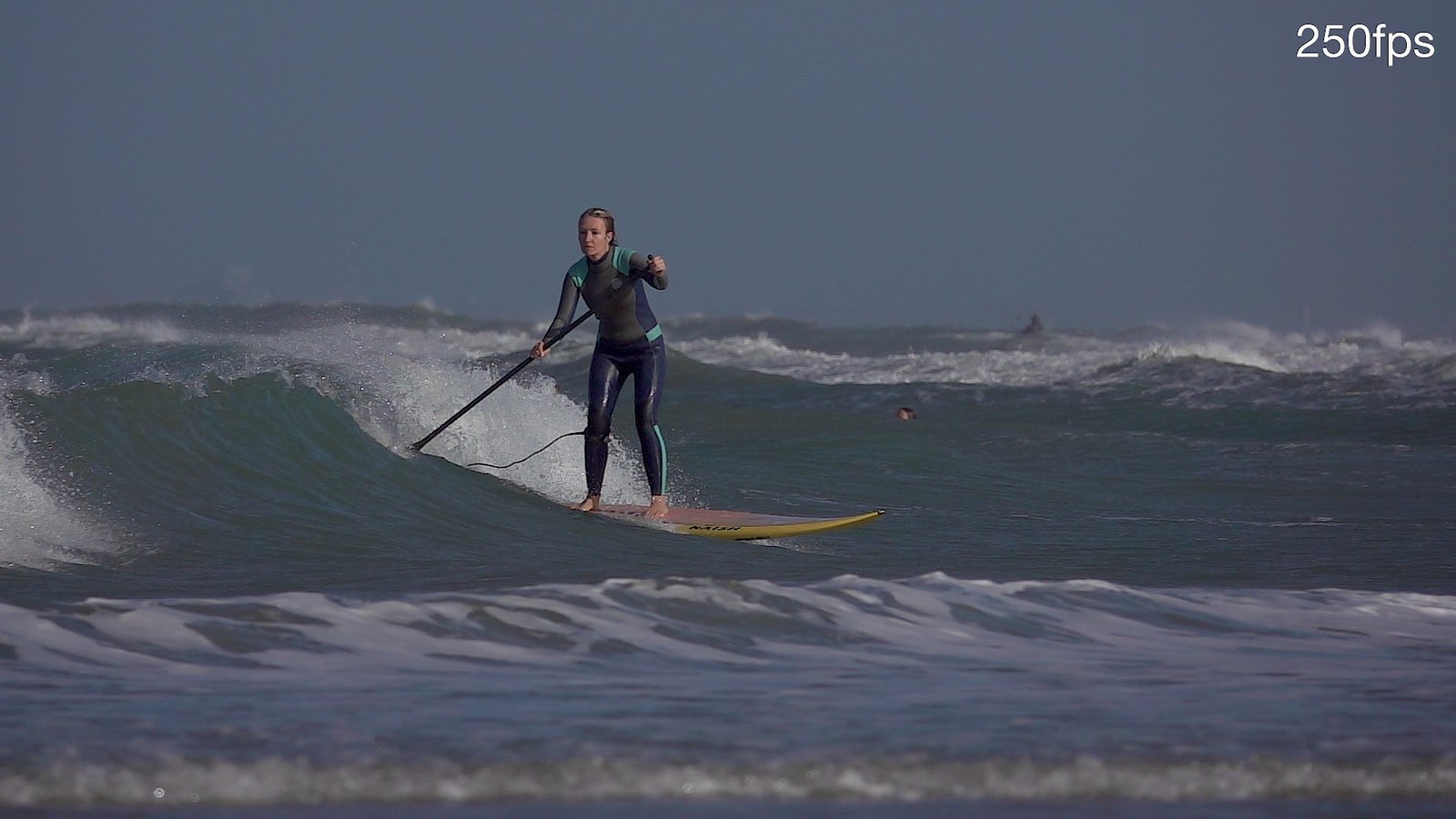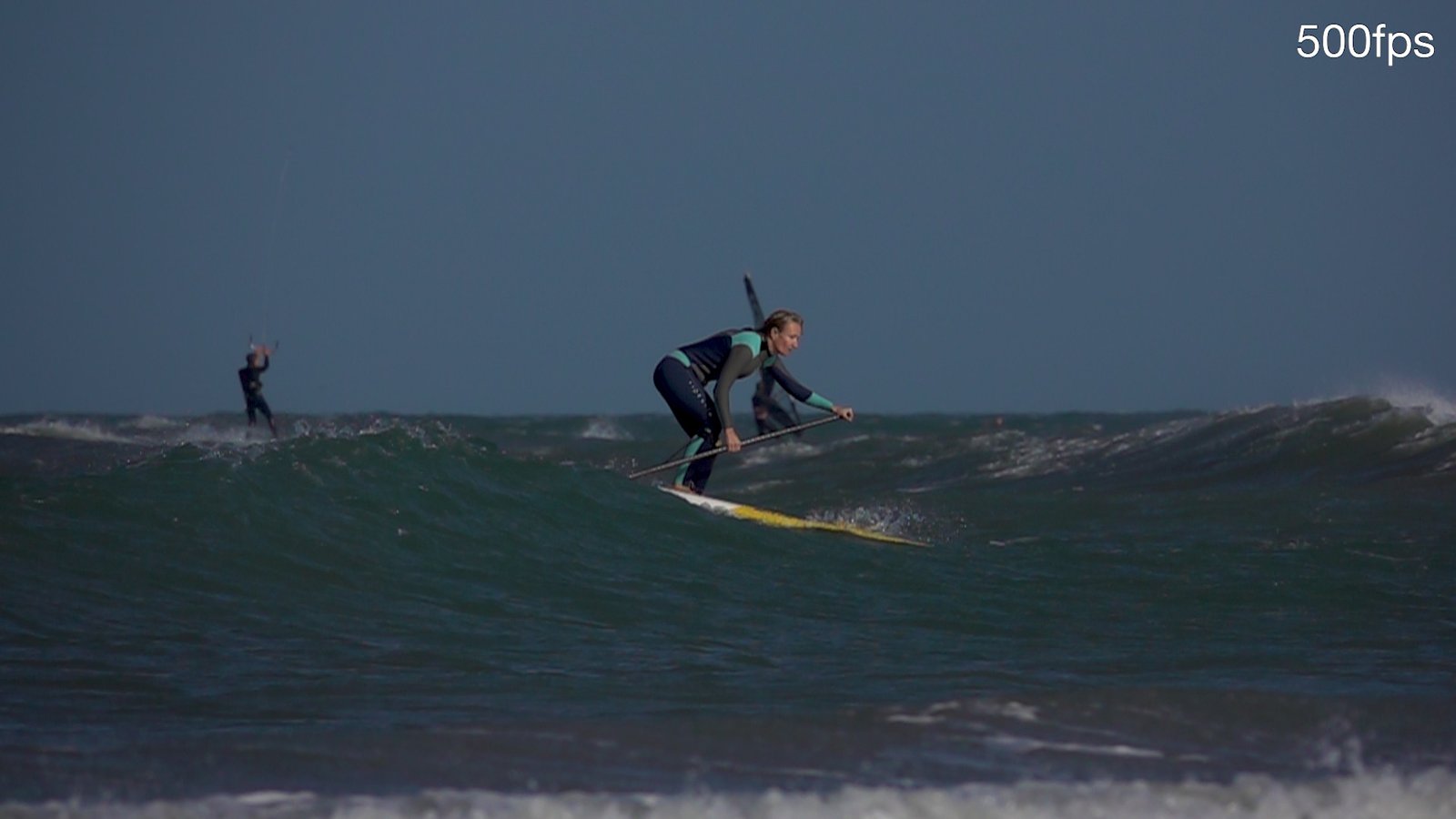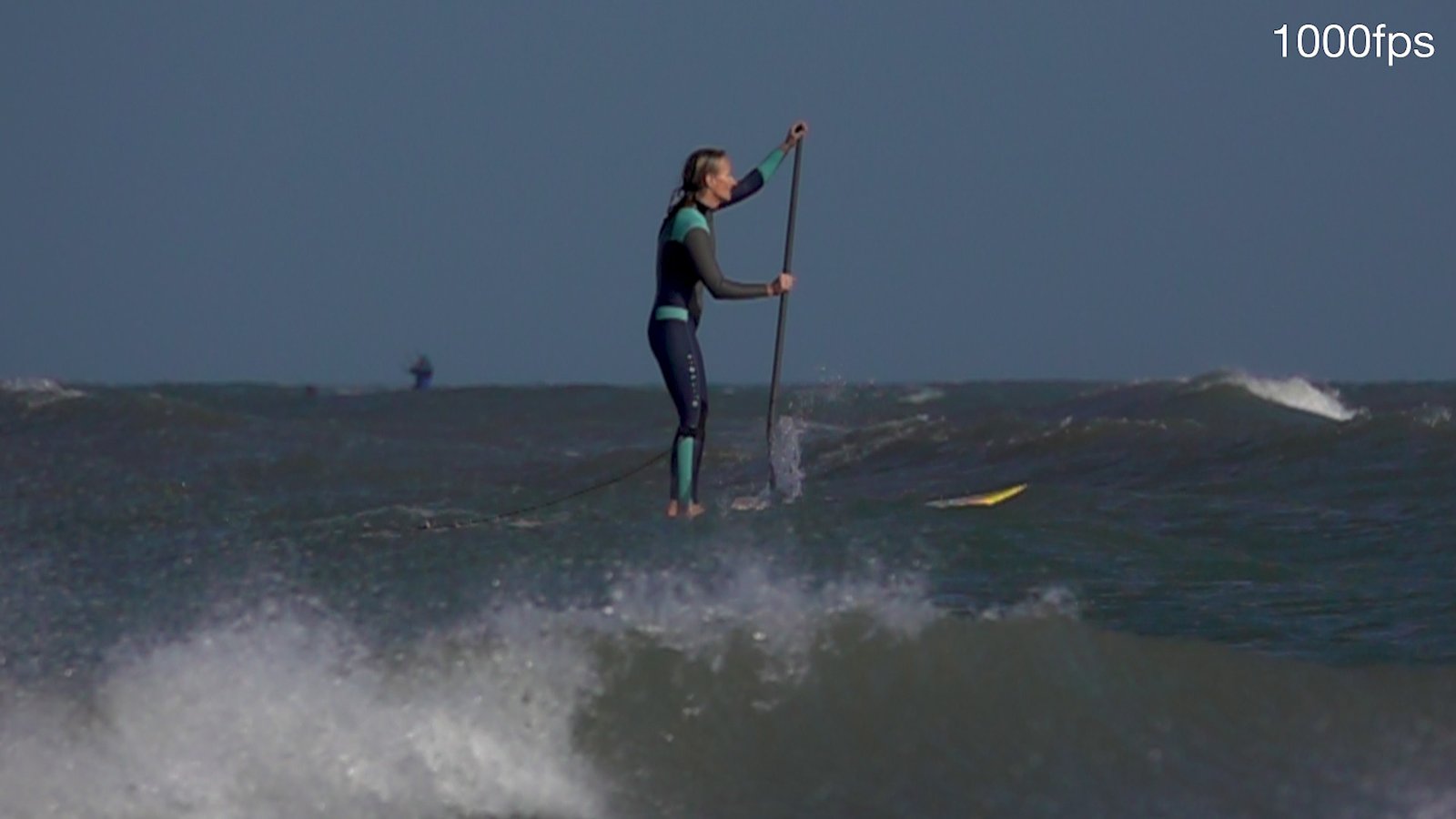Slow-motion is magic
Slowing down time has always been something magical and for a long time, it was only available in expensive cameras. Even half the speed already makes a simple scene more interesting.
Back in 2009, I shot my first slow-motion short, the only option was 720P but the result still feels like a bit of magic even today. Shot with the Sony EX3 and Letus 35mm adapter using Nikkor lenses to get the 35mm shallow depth of field, all the rage back then. FullHD was still pretty new and we only got slowmotion in the lower resolution: 720/50P. Despite the big changes that followed this framerate/resolution setting did not change in DSLR’s for a very long time.
In 2014, with the arrival of the original A7S, not only did I get 50FPS(60FPS) in 1080P but 100FPS(120FPS) in 720P. This was going to be amazing: slowing down time by four times, it was like owning your own Phantom! Well, not really, the problem was the bitrate didn’t change, splitting the 50mbit into four giving you 12.5mbit. Turning anything you shoot into a soft lego VHS looking a mess. The industrial FS700 had a nice buffered slow motion, something the FS5, a camera that has its shortcomings, inherited and now we get usable continues 100FPS slow-motion in the RX10IV.
Here is a video shot during Veteran day on June 24, 2017, using just the FS5 and Sony 70-200 F4.
RX10IV: Continues 100FPS!
With the RX10IV Sony is really taking the bridge camera to another level, the RX10IV does 100 frames continues with sound and autofocus! The HFR (High Frame Rate) options on the RX10IV are very usable and give you excellent slow-motion. You get the same buffered option as you do with the FS700/FS5 only this one starts at 250FPS and jumps from 500FPS all the way up to 1000FPS.

The options
So here is the curious thing about shooting slow-motion video: the 100FPs option is great, you shoot for as long as your memory card and battery last, you keep the ability to zoom, autofocus with face tracking and can change exposure while shooting. All things that are locked in when using the buffered HFR mode.
The fastest way to get the right things in focus while shooting video is to keep the camera in S, shutter priority, set the right shutter speed for video and use the shutter button to make the camera focus on whatever I want to shoot and then press record. If you want to see your audio meters and framing before you start recording video, you have to put the camera in Video mode. But this will slow down the autofocus considerably, especially when you are using the EVF in a sunny situation when using the LCD you can use touch autofocus to speed up the focusing. When shooting in HFR this is pretty much how it works as well with the only difference: you don’t get to decide on exposure and once you set the focus it locks into that setting the minute you trigger the buffer.
RX10IV HFR: High Frame Rate
In HFR there are some limitations, in fact, whatever the camera settings at the beginning of the shot are locked in for as long as it keeps buffering. It doesn’t buffer video until you press the centre button on the scroll wheel, only then will it start buffering and you can let it buffer as long as you like. But there is no zooming, no exposure changes and no focus changes. So if your subject walks towards you: you are in trouble. To adjust any of these you need to turn the buffering off first, only then will the camera allow you to zoom and adjust its exposure.
Trigger happy
When using end trigger, all you have to do is pick a moment, wait for it to happen and press record. This will write the slow-motion to the card, and it is all in slow motion believe me: it takes 45 seconds to write a 250FP shot to the memory card. Another reason to wonder why Sony is still opting for the steam-powered copper plate and hammer tech so very popular during the great Pyramid renaissance of 1863, but that would be a waste of time, and time is something we need lots of for all those future buffer moments of Zen I so look forward too.
Here is the first result of an hour at Scheveningen beach during an amazing summers day in October:
If you compare this to a camera like the FS5, I think the quality is pretty close and it will be interesting to shoot a side by side video The RX10IV does have some moiré issues as you can see in the purple top of the pretty girl. Youtube doesn’t really do the FullHD version justice, it really is not that compressed or blocky so I uploaded a 4K version with a bitrate between 60mbit and 100mbit. This video is a mix between 100FPs and 250FPS because they seem like the most usable frame rates. The video is colour corrected because I like it fancy 🙂
Trying 100FPs, 250FPS, 500FPS and 1000FPS
The 500 FPs and 1000FPS framerates needed testing, here is a video that combines 100FPs, 500FPs and 1000FPS and surfing, this shows you what happens to video with a lot of info in the shot:
Here are some frame grabs from the video to show you the difference in detail: (click images for full-size frame grabs from the edit timeline)
At 100FPS you get pretty clean 1920×1080 FullHD, a little bit of moiré and colour fringing, but if you use some of the old Video DSLR tricks like Sharpen +29 you get a nice crisp image.
Advantages: 100FPS lasts as long as your battery/SD card, you don’t have to time or be very picky, just start shooting. The autofocus is a bit slow to catch your subject if you make any big changes in your framing/subject distance.
250FP at 1824×1026 is the first limited buffer record version and the quality is very much like the 100FPS: Clean and with a bit of sharpening nice and crisp, in some shots, it just feels sharper than 100FPS. The disadvantage: the moment you trigger buffering it locks the camera, no access to the menus, your framing, focus and exposure settings until you turn buffering off! Before you trigger the buffering the PDAF is very fast, but because it doesn’t track a subject, shooting anything coming at you is not going to be tracked.
500FPS at 1824×616 becomes a lot softer and even with some extra sharpening it still looks like a VHS copy.
1000FPS at 912×308 is pretty close to the old VHS norm, compared to the others it looks pretty awful and not something I would like to use in anything but an RX10IV review video.
1000FPS crop
As you can see in the slider above: 1000FPS is a cropped mode, I doubt it is pixel to pixel: it would not be so fuzzy, but that is just a guess.
As mentioned earlier: 100FPS is a very handy framerate, it gives you nice slow-motion with sound, 250FPS is beautiful if the focus and exposure are correct, 500FPs and 1000FPs are just a bit too muddy for my taste, but if you shoot something simple you might get away with the low bandwidth and resolution. Feel free to let us know how you would use these option in the comment section![/et_pb_text]





October 24, 2017
Awesome, thanks! This is the first honest review I have seen that tells the truth about the slow motion. I wish I had read this last week, save me the trouble of figuring out that 480 and 960 are not usable for me. Also thanks for sharing your settings, helpful to know how the videos were captured and edited.
October 24, 2017
Thanks Clay, You know what it’s like: trying to share what I have learned. Working on a more detailed post about editing the RX10IV footage into a more cinematic look with examples and settings. Surfing and telling stories with pretty pictures what more can we ask for! 🙂
October 25, 2017
Good vibes and good times!
November 20, 2017
Thanks, you have explained in details that even I could understand.
And hello from finland!
November 20, 2017
Thanks, glad to hear it was helpful! and hello back from Holland 🙂
December 12, 2018
Maarten, I thank you for some interesting posts and your comments and views are for me thought provoking.
i have been contemplating buying A RX10IV and am looking at all the honest reviews I can find by users like your self not some article by the press at a free Sony Junket.
you mention ” old Video DSLR tricks like Sharpen +29 ” wher or when do you apply this? in the profile or in editing afterwards?
December 12, 2018
Hi Ad, thanks, glad the info is helpful. The +29 sharpen is something I used to do with Canon cameras when editing in Adobe Premiere. So yes it is while editing, this way you have more control over the image than having a sharp baked in look. Doing some experimenting to see what you prefer would me my suggestion!
Good luck!
December 12, 2018
thanks you , I think I will stay with my A7r2 and prime 55 Zeiss and 24-70 , I got a 18-200 power zoom as well so I think I don’t need the 10 IV and it’s noisy images
December 13, 2018
Excellent idea, if you are used to the R2, especially with the fantastic 55 the 10IV wil only dissapoint. All respect to a very capable camera but it is nothing like the clean image of a A7Rll.